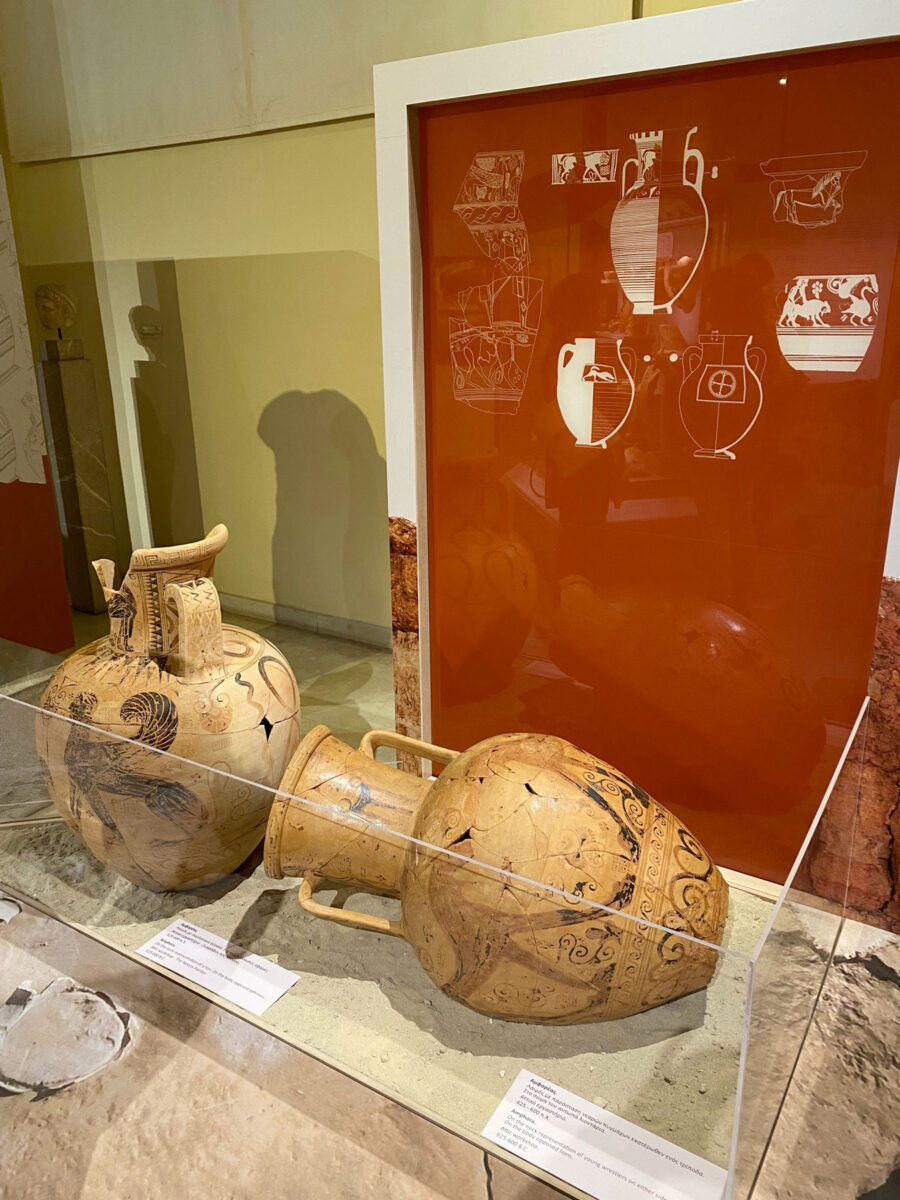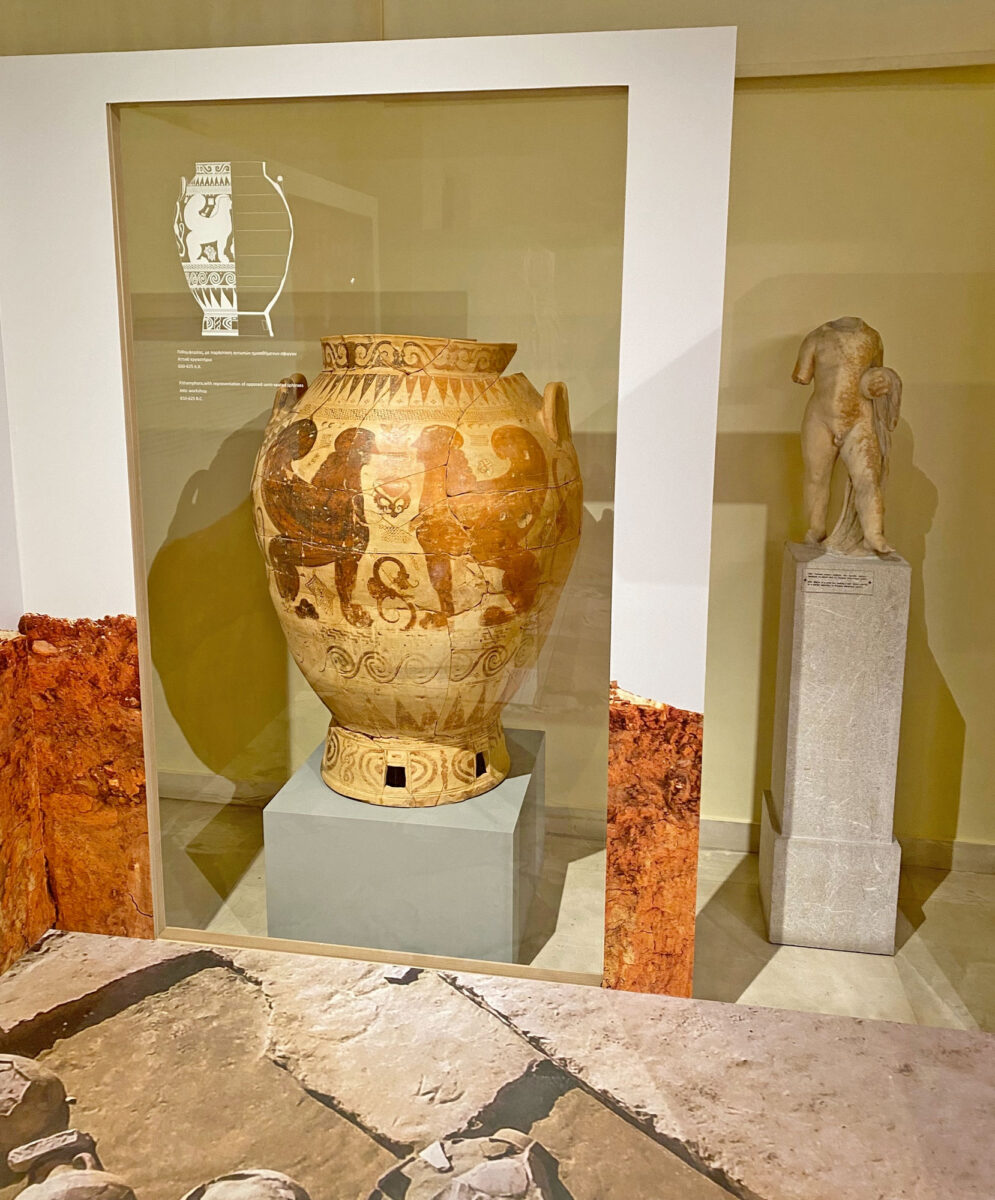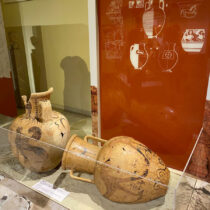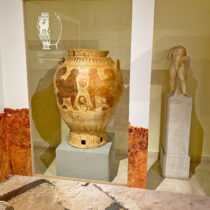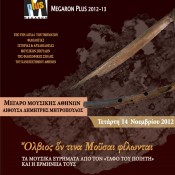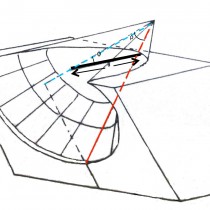“Piraeus has an extremely important cultural reserve, a great comparative advantage, which enhances its character over time. Today, Piraeus is becoming more dynamic with the government investing substantially in the city”, said the Minister of Culture and Sports Lina Mendoni who in the presence of mayor Yiannis Moralis opened the temporary exhibition “Phalēróthen. Between two worlds” at the Archaeological Museum of Piraeus. The exhibition presents some of the most important findings from the rescue excavation in the Faliron Delta at the Stavros Niarchos Foundation Cultural Centre / SNFCC and is part of the events for the European Cultural Heritage Days.
Lina Mendoni, referring to the important cultural reserves of the city, said that “the findings of the Metro are a tangible example, with the largest archaeological research excavation ever having been carried out within Piraeus’ urban fabric. As is always the case with public infrastructure projects implemented in our country, many prominent and diverse findings came from this one which will be presented in the museum space of the wooden warehouse by the Ministry of Culture and Sports via the Ephorate of Antiquities of Piraeus with the cooperation of the Ministry of Infrastructure and Transport and the Attiko Metro.
“As you already know, the establishing of the Museum of Marine Antiquities in the port’s Silo building is underway. We are in the tendering process with the project’s budget of approximately 90 million euros having been secured by the Recovery Fund. Piraeus will acquire a Museum of unique importance and scope. All the underwater archaeological wealth of Greece, never exhibited before except for individual finds, will be displayed in this museum. Moreover, the project of redeveloping the sea front with a strong cultural character due to the ancient Kononeion wall, is being launched by the Municipality of Piraeus”.
Regarding the exhibition “Phalēróthen. Between two worlds”, the Minister noted that “the rescue excavation at the SNFCC, carried out in an entirely systematic fashion, also linked and interpreted earlier research excavations in the same area and yielded findings that add to the pieces of the mosaic not only of the archaeological past of the Piraeus’ wider area, but also of the historical past of Athens and Attica”.
The exhibition is divided into 4 sections: The first two concentrate mainly on Attic burial customs, during the Early and Late Archaic periods. They focus on the artefacts that accompanied the deceased, but also on those that were part of the ritual of caring for them on their last journey. The third section is centred on Protoattic pottery, while the fourth depicts three burials that have been examined from a bioarchaeological perspective. That is, it presents the identity of the buried people and narrates elements of their life story.
The first evidence of the existence of a cemetery in the Faliro Delta was recorded as early as 1864, while at the beginning of the 20th century two small-scale rescue excavations were carried out by K. Kourouniotis (1911) and E. Pelekidis (1915). From the latter came the unorthodox – for the perceptions of the time – finding of the group burial of 18 adults who had been executed by apotympanismos, an early form of execution where the condemned were tied by shackles onto a tall and wide wooden plank erected on top of hills or at crossroads to be visible from a distance. The area was systematically excavated during the recent construction of the Stavros Niarchos Foundation Cultural Center (SNFCC) on the site of the old racecourse.
The exhibition is curated by the head of the Piraeus Ephorate of Antiquities Stella Chrysoulaki with the collaboration of archaeologists Ioannis Pappas, Dora Evangelou, Alexandra Syrogiannis, Aikaterina Panagopoulou and Andromachi Kapetanopoulou. It will run until December 31, 2023.
